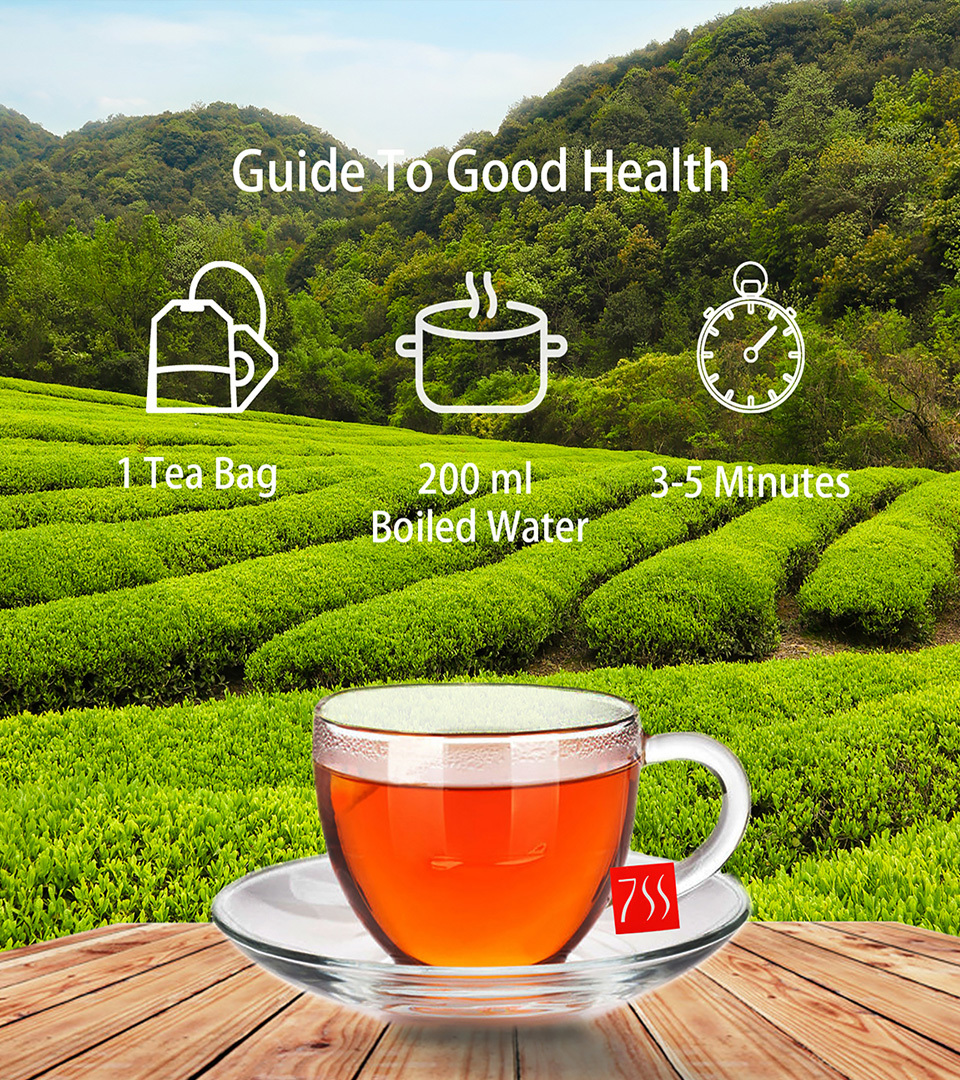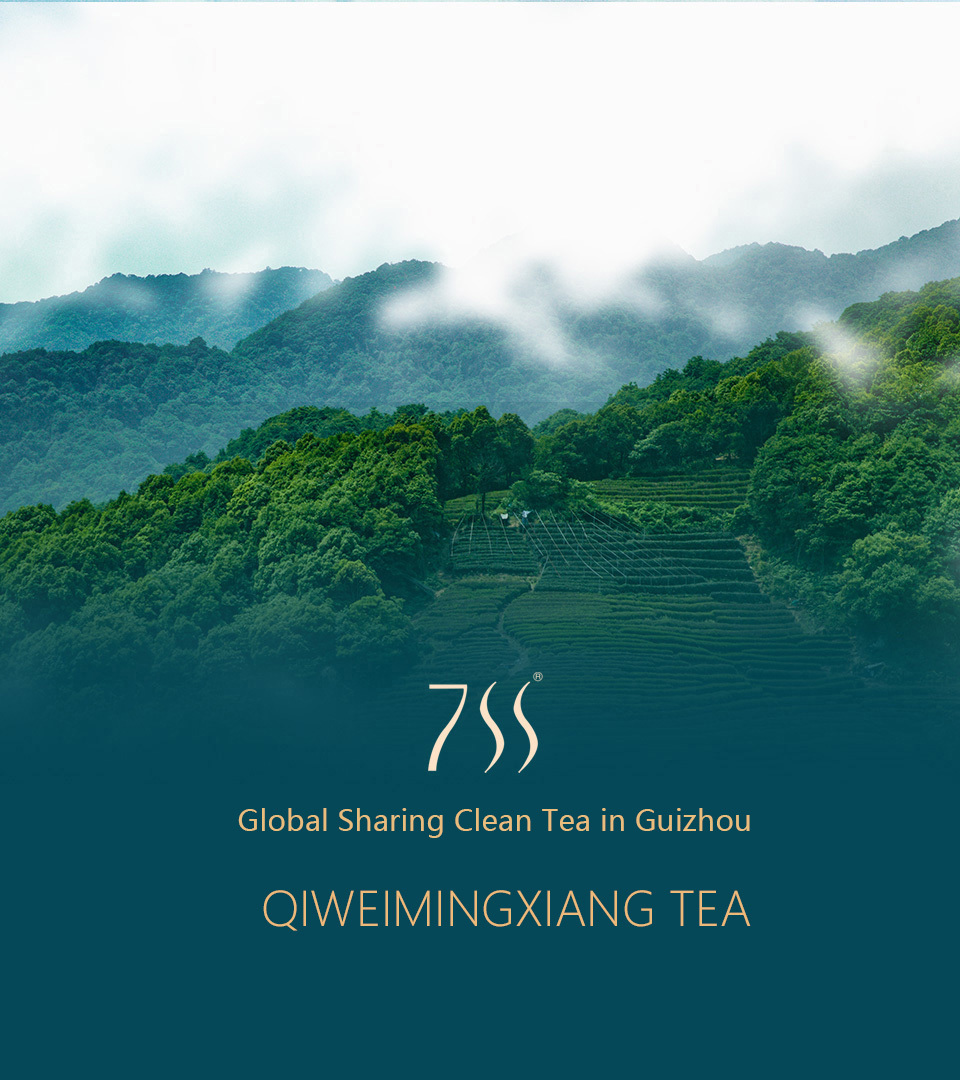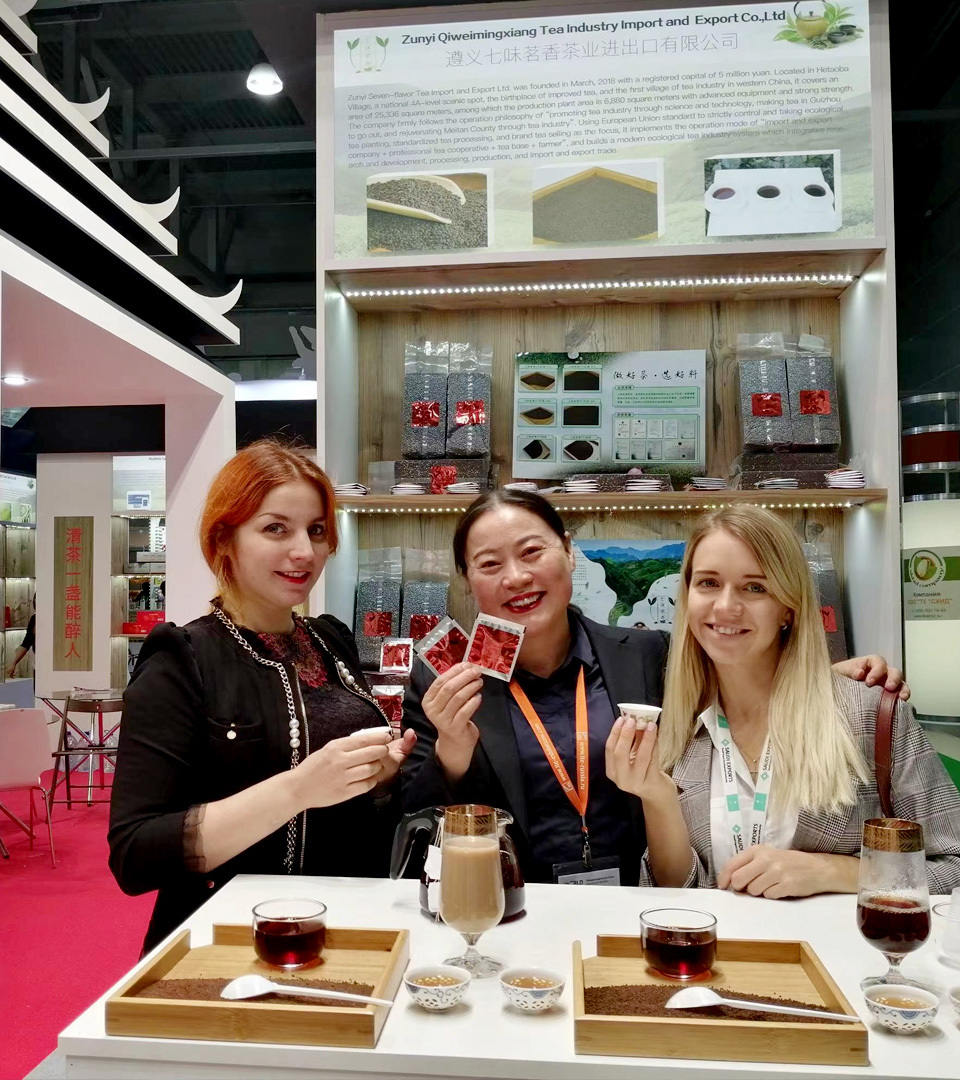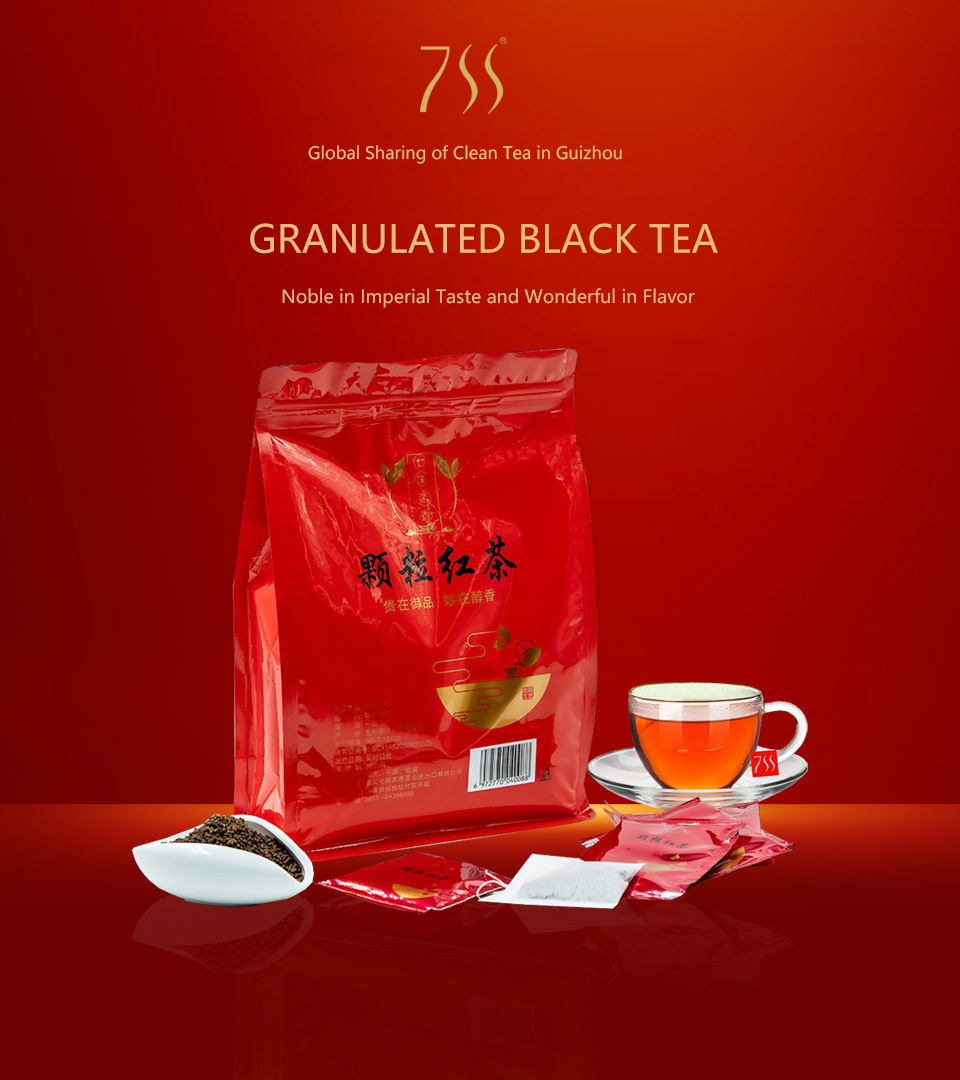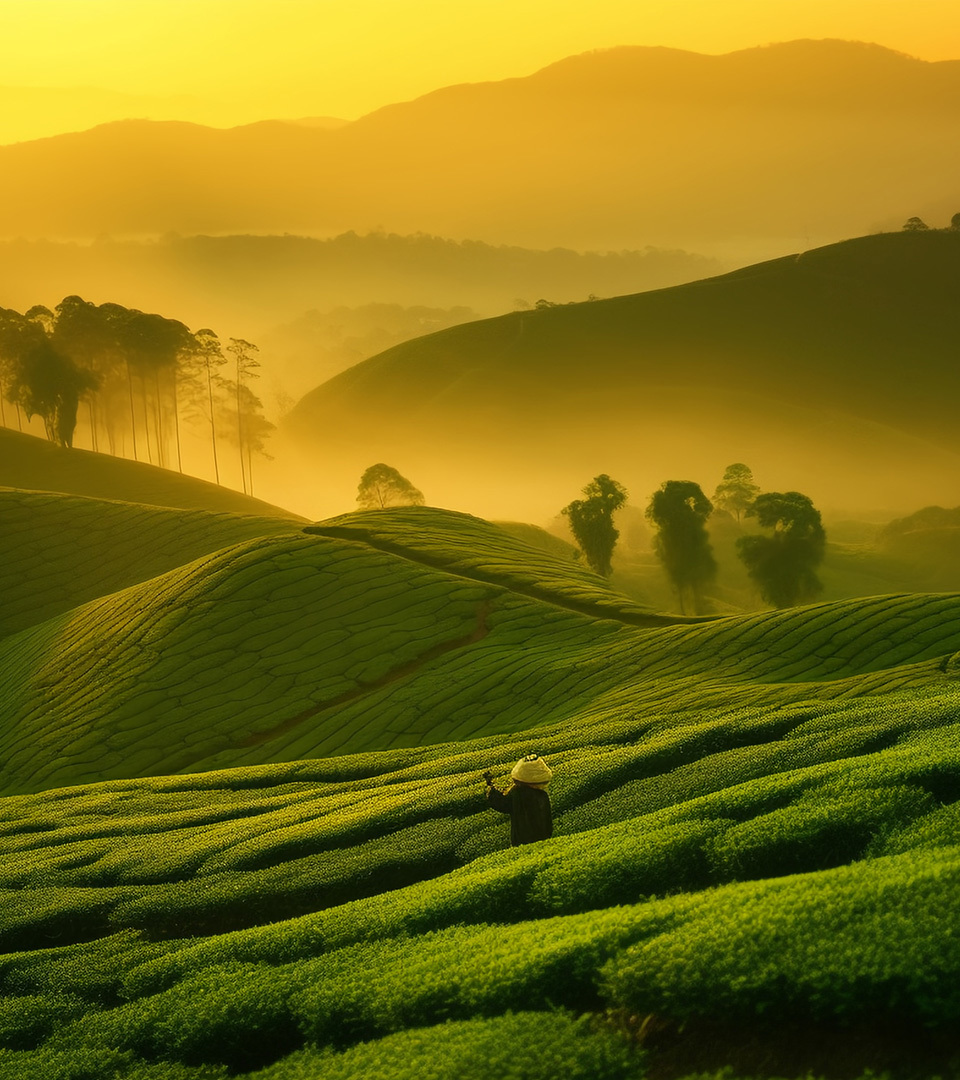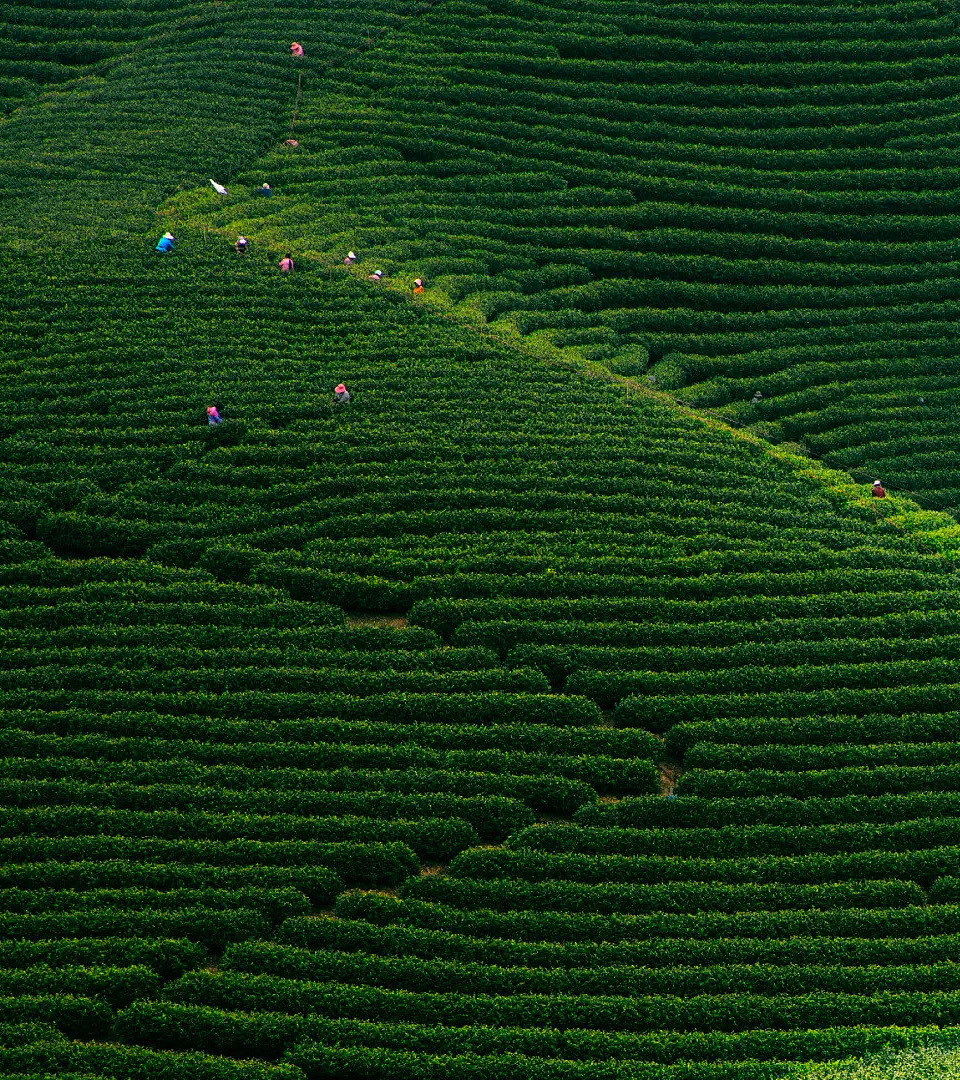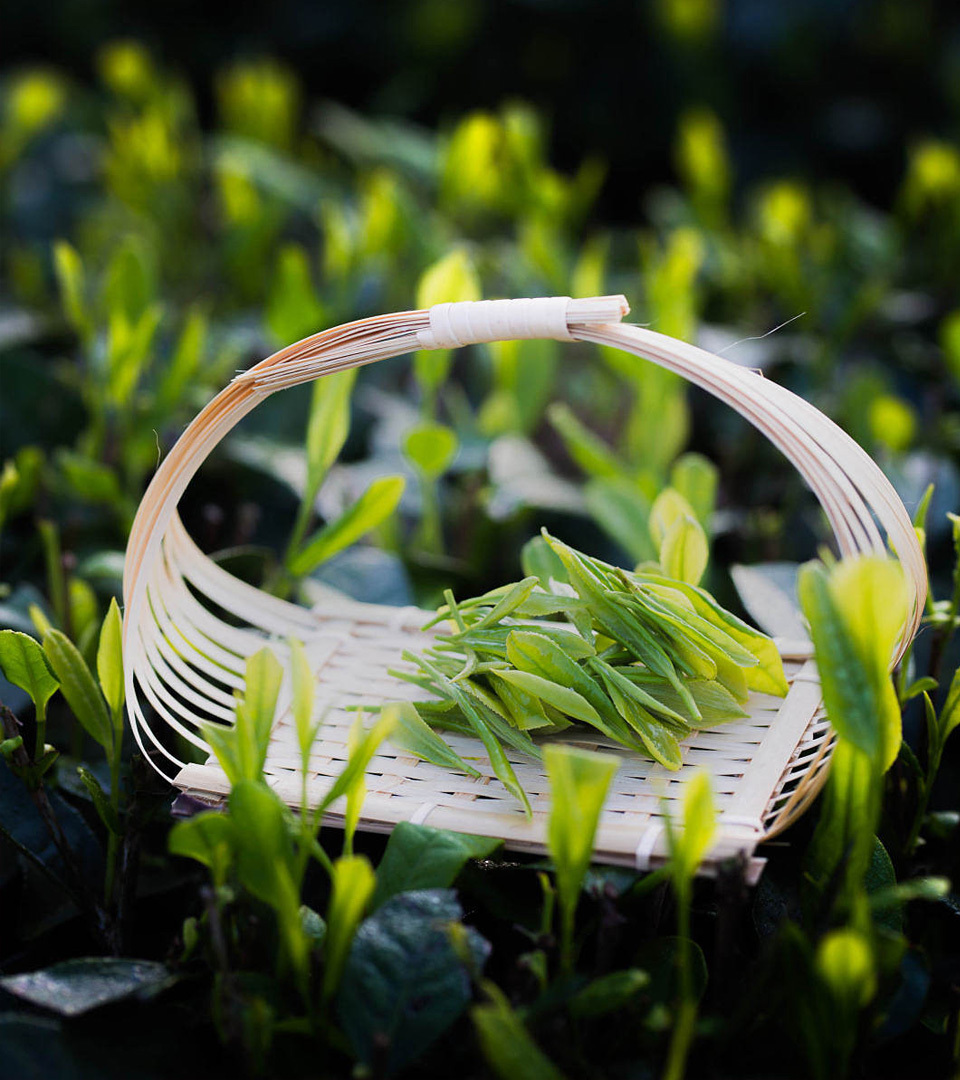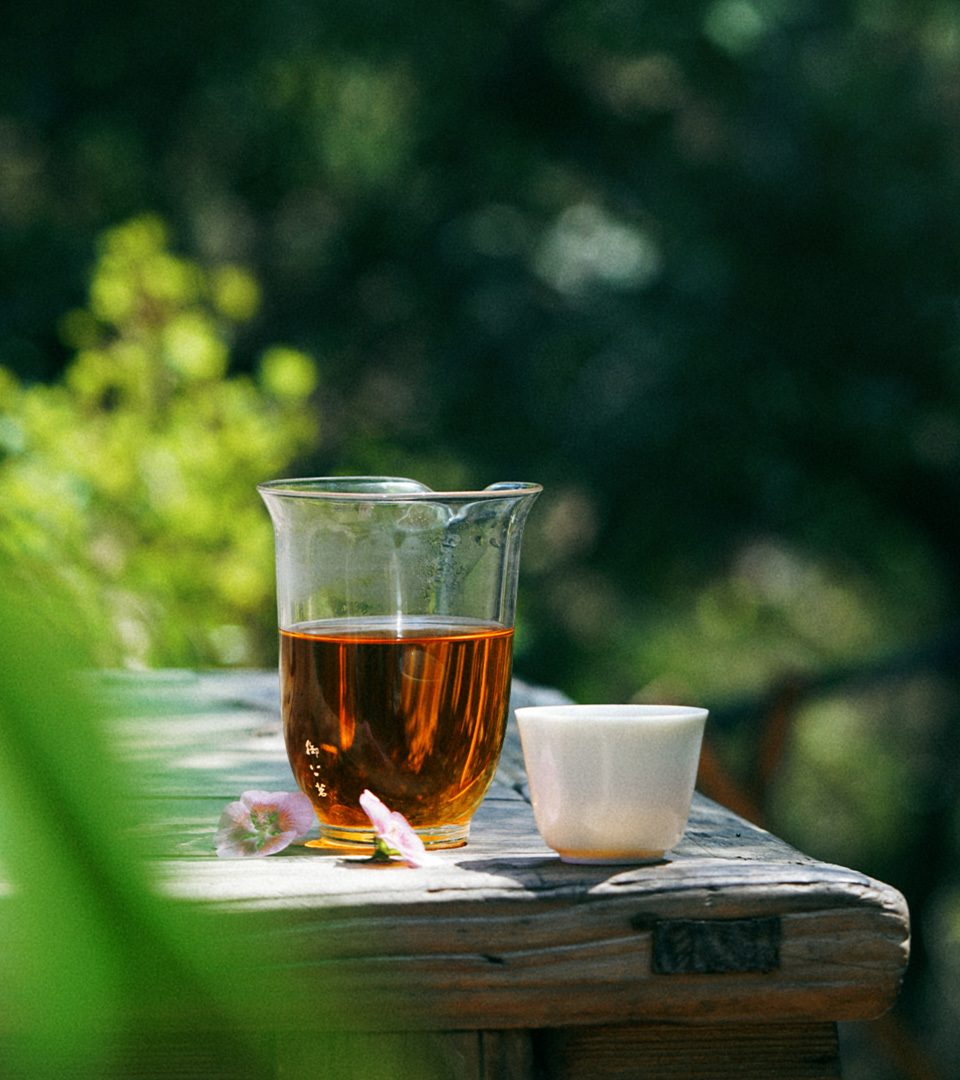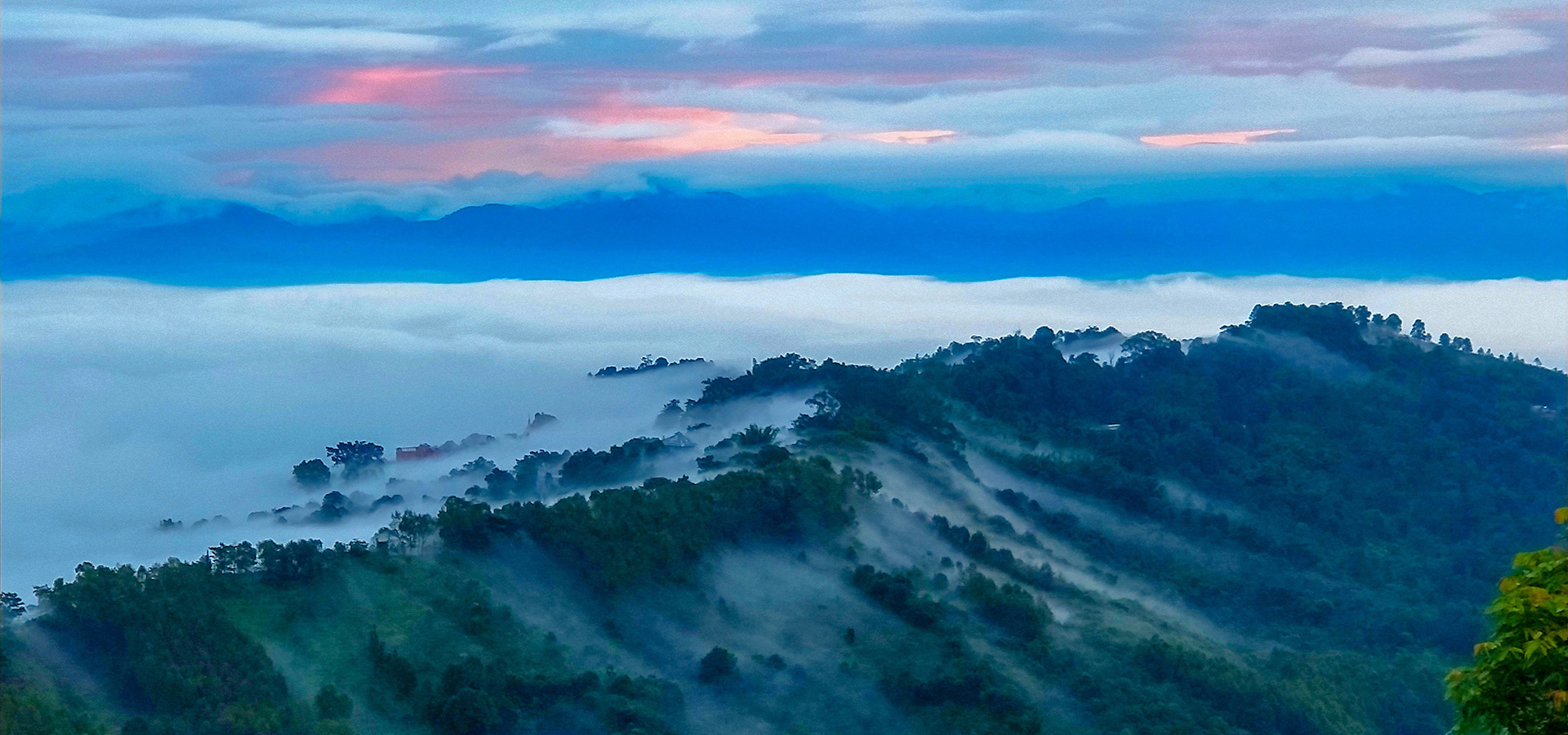| Chinese Tea | |||||||||||
| Basic Tea | Reprocessed tea | ||||||||||
| green tea | White tea | yellow tea | oolong | black tea | dark tea | scented tea | health tea | extracted tea | Tea containing beverages | ||
| green tea | |||||||||
| sunshine withering | Steaming | Fried Green | baking | ||||||
| Yunnan green, Sichuan green, etc | Fried tea, jade dew, etc | West Lake Longjing, Biluochun, etc | Mount Huangshan Maofeng, Taiping Houkui, etc | ||||||
| oolong | |||||||||
| Northern Fujian | southern Fujian | Guangdong | Taiwan | ||||||
| Dahongpao, Cinnamon, Narcissus, etc | Tie Guanyin, Huang Jingui, etc | Phoenix single cluster, Phoenix narcissus, etc | Wenshan Baozhong, Oriental Beauty, etc | ||||||
| dark tea | |||||||||
| Anhua | Hubei | Sichuan | Yunnan Guangxi | ||||||
| Anhua black tea, etc | Hubei Laoqing Tea, etc | South Road Side Tea, North Road Side Tea, etc | Pu'er tea, Liubao tea, etc | ||||||
| black tea | |||||||||
| Xiao Zhong Black Tea | Congou black tea | Broken black tea | |||||||
| Masayama race, etc | Qimen Gongfu, Dianhong Gongfu, etc | Broken tea, ground tea, etc | |||||||
| yellow tea | |||||||||
| Huangya Tea | Huang Xiaoya | Huang Daya | |||||||
| Junshan Silver Needle, Mengding Huangya, etc | Beigang Maojian, Weishan Maojian, etc | Huoshan Huang Daya, Guangdong Daye Qing, etc | |||||||
| White tea | |||||||||
| White bud tea | White leaf tea | ||||||||
| Baihao Silver Needle, etc | White Peony, Shoumei, etc | ||||||||
| Green tea (classification of origin) | |||||||||||||||||
| Zhejiang | 江苏 | Anhui | Jiangxi | Hunan | Guizhou | Sichuan | Henan | Other regions | |||||||||
| Xihu Longjing et al | Dongting Biluochun et al | Mount Huangshan Maofeng, Lu'an Gua Pian, Taiping Houkui | Lushan Cloud and Mist | Guzhang Maojian, Baojing Golden Tea | Duyun Maojian | new growth like bird's tongue | Xinyang Maojian Tea | ||||||||||
| Green tea (appearance classification) | ||||||||||||||||||||||||||||
|
Curled Striped Tea |
flat tea | Sheet-shaped tea | Pointed tea | Needle shaped tea | Other types | |||||||||||||||||||||||
| Dongting Biluochun, Guzhang Maojian, etc | Xihu Longjing et al | Lu'an Gua Pian | Taiping Monkey Kui Tea | Xinyang Maojian Tea | ||||||||||||||||||||||||
| Green tea (classified as green tea) | |||||||||
| sunshine withering | Steaming | Fried Green | baking | ||||||
| Dianqing Green Tea | Shien Green Dew | Xihu Longjing et al | yellow mountain fuzz tip | ||||||
| Green tea (raw material classification) | ||||||||||||||||||||||||||||
| single bud | One bud and two leaves | One bud and three pages | blade | |||||||||||||||||||||||||
| Baojing Golden Tea, etc | Xihu Longbian et al | Taiping Houkui and others | Lu'an Gua Pian | |||||||||||||||||||||||||
| Green tea (aroma classification) | |||||||||
| Floral fragrance | Tender fragrance | Bean fragrance | Chestnut fragrance | Other fragrance types | |||||
| Generally available | famous green tea | West Lake Longjing Tea | Guzhang Maojian | ||||||
| Chinese tea (brewing elements) | ||||||||||||||||||||||||||||
| green tea | White tea | yellow tea | oolong | black tea | dark tea | |||||||||||||||||||||||
| Low temperature brewing of green tea is the king's way | High temperature soaked white tea has a fragrant and strong taste | Yellow tea should not be covered when treated at low temperatures | High temperature brewing and fixed point water injection of oolong tea | The most exquisite temperature for applying red tea in the black tea ceremony | Black tea is treated with tenderness and kindness to cleanse its body | |||||||||||||||||||||||
| Chinese tea (water temperature, soup) | |||||||||||
| green tea | White tea | yellow tea | oolong | black tea | dark tea | ||||||
| Start making soup at around 80 ° C | About 85 ° C and 5 seconds for soup production | Start making soup at around 85 "C | Starting at 90 ° C for 5 seconds to make soup | Start making soup at 90C for 5s | Starting at 95 ° C for 10s to make soup | ||||||
| 提示:本表仅适用部分品饮冲泡中部分茶品种,数据是个人多年经验总结 | |||||||||||
| Chinese tea (brewing equipment) | ||||||||||||||||||||||||||||
| Covered bowl | glass | Purple clay pot | Tea cooker | |||||||||||||||||||||||||
| Applicable to the six major tea categories | Suitable for ornamental brewing, not recommended for drinking | Suggest brewing oolong tea to highlight the tea aroma | Suggest Anhua black tea, mature Pu Lao Bai tea | |||||||||||||||||||||||||
| Chinese Tea (Water Injection Elements) | ||||||||||||
| hips | Low impulse | Water coarse | Water fine | Unilateral fixed point | Median fixed point | Spiral water injection | Ring water injection | |||||
| The water flow cools down more in the air, and the water and tea shake strongly | Water flow cools down less in the air, and water and tea shake weakly | The time to fill the kettle with water is short, and the water temperature in the kettle is high | The time it takes to fill the kettle with water is long, and the water temperature in the kettle is low | Inject water along the edge of the pot to prevent direct contact with the tea leaves | Injecting water into the center of the pot directly impacts the tea leaves | Rotate from the edge of the pot towards the center of the pot to inject water | When injecting water, the water line should be rotated around the cup surface to return to the water outlet point | |||||
| Chinese tea (appearance vocabulary) | ||||||||||||||||||||||||||||
| green tea | White tea | yellow tea | oolong | black tea | dark tea | |||||||||||||||||||||||
| Small and tender buds and leaves | Heartless, plump, furry, and pure white | Miao Feng is flat, straight, and covered in silver hair | Striped and plump, with curly leaf tips | Striped and plump, black and shiny | Leaf stem with clear texture | |||||||||||||||||||||||
| Reminder: This table is only applicable to some tea varieties in the brewing of some drinks. The data is a summary of personal years of experience | ||||||||||||||||||||||||||||
| Chinese tea (dry tea color vocabulary) | |||||||||||
| green tea | White tea | yellow tea | oolong | black tea | dark tea | ||||||
| Dark green, gray green | Silver sprouted green leaves with white background and green surface | Golden and tender yellow | Green brown and black brown | Black and oily | Wurun Black Brown | ||||||
| Reminder: This table is only applicable to some tea varieties in the brewing of some drinks. The data is a summary of personal years of experience | |||||||||||
| Chinese Tea (Aroma Vocabulary) | ||||||||||||||||||||||||||||
| green tea | White tea | yellow tea | oolong | black tea | dark tea | |||||||||||||||||||||||
| Green tea: tender, fragrant, floral, chestnut, bean flavored | Fragrant flower fragrance | Green and sweet fragrance | Roasted Fragrant Glutinous Orchid Flower Fragrance | Pine smoke aroma and sweet potato aroma | Chen Xiang Mushroom Fragrance | |||||||||||||||||||||||
| Reminder: This table is only applicable to some tea varieties in the brewing of some drinks. The data is a summary of personal years of experience | ||||||||||||||||||||||||||||
| Chinese tea (Tang Se Ye Di vocabulary) | |||||||||||
| green tea | White tea | yellow tea | oolong | black tea | dark tea | ||||||
| Green Leaf Green Soup | Leaf color, dark green, soup color, apricot yellow | Huangye Huangtang | Green leaves with red edges, golden color in soup | Red Leaf Red Soup | Leaf color oil black soup color orange red | ||||||
| Reminder: This table is only applicable to some tea varieties in the brewing of some drinks. The data is a summary of personal years of experience | |||||||||||
| Chinese Tea (Vocabulary of Taste and Taste) | ||||||||||||||||||||||||||||
| green tea | White tea | yellow tea | oolong | black tea | dark tea | |||||||||||||||||||||||
| Sweet and Fresh | Sweet and mellow | Fresh, sweet, and mellow | Heavy alcohol and | Fresh and mellow, thick and heavy | Chen mellow and sweet | |||||||||||||||||||||||
| Reminder: This table is only applicable to some tea varieties in the brewing of some drinks. The data is a summary of personal years of experience | ||||||||||||||||||||||||||||
| Chinese Tea History (Summary Edition) | |||||||||||
| Originating from Shennong | Rising in the Sui and Tang dynasties | Sheng Qi Song Yuan | Radiant and clear | ||||||||
| From uncooked soup drinking to primitive green tea | From Biwu Drinking to Zen Tea Taste | From the Prosperity of Scattering Tea to the Prevalence of Playing Tea | From Roasting Green to Drinking Clear | ||||||||
| Reminder: This table is only applicable to some tea varieties in the brewing of some drinks. The data is a summary of personal years of experience | |||||||||||
| Chinese Tea History (Functional Edition) | ||||||||||||||||||||||||||||
| medical | edible | Drinking | custom | |||||||||||||||||||||||||
| The effect of detoxification | Tea Congee | Prevalence of Tea Tasting | Wedding and sacrificial ceremonies, etc | |||||||||||||||||||||||||
| -Generally speaking, the functions of medicinal use, consumption, drinking, and customs are all progressive and interrelated | ||||||||||||||||||||||||||||
| Chinese Tea History (Form/Tool Version) | |||||||||||
| cook | Fried | drop | bubble | ||||||||
| Pottery, etc | 24 units such as blast furnaces | Jianzhan et al | Covering bowls, purple clay pots, etc | ||||||||
| Chinese Tea History (Craft Edition) | ||||||||||||||||||||||||||||
| sunshine withering | Steaming | Dragon and Phoenix Cake | Steamed Green Scattered Tea | Stir fried green loose tea | ||||||||||||||||||||||||
| Wei, Jin, Northern and Southern Dynasties | Tang Dynasty | Song dynasty | Song and Yuan Dynasties | The Birth of Six Major Tea Categories in China during the Ming and Qing Dynasties | ||||||||||||||||||||||||
| Chinese Tea History (History Edition 1) | |||||||||||
| 5000 years ago | 3000 years ago | 2300 years ago | 2000 years ago | 1500 years ago | |||||||
| Shennong Tastes All Kinds of Grass to Get Tea Solution | Starting to cultivate tea trees and develop tea for consumption | Tea has transitioned from consumption and medicinal use to consumption | Tea begins to commercialize | Facilitate transportation and start pressing tea leaves into cakes | |||||||
| Chinese Tea History (History Edition 2) | ||||||||||||||||||||||||||||
| 1200 years ago | 1000 years ago | 700 years ago | 600 years ago | 300 years ago | ||||||||||||||||||||||||
| The economic development of the Tang Dynasty saw the rise of tea | Improve tea making skills and pay more attention to water quality and utensils | Zhu Yuanzhang's "Abandoned Tuan Tea, Xingye Tea" Accelerate the development of tea |
The progress of tea making technology and the emergence of other types of tea | Chinese tea is popular in the world, taking the lead in the world tea market | ||||||||||||||||||||||||
| Fresh leaves of Chinese tea (substance content) | |||||||||||
| moisture content | Dry matter | ||||||||||
| 75%-78% | 22%-25% | ||||||||||
| Organic compounds | inorganic compound | ||||||||||
| Chinese Tea (Organic Compound 1) | ||||||||||||||||||||||||||||
| protein | amino acid | alkaloid | enzyme | tea polyphenols | saccharides | |||||||||||||||||||||||
| 20% -30% mainly composed of gluten, etc | 1% -4% 26 species have been found | 3% -5% mainly consists of caffeine and other substances | Mainly oxidoreductases, etc | 18% -36% mainly composed of catechins, etc | 20% -25% mainly composed of fibers, pectin, etc | |||||||||||||||||||||||
| Chinese Tea (Organic Compound 2) | ||||||||||||||||||||||||||||
| organic acid | lipid | pigment | Aromatic substances | vitamin | other | |||||||||||||||||||||||
| 3% mainly consists of malic acid, citric acid, etc | 8% mainly consists of fats, phospholipids, etc | 1% mainly consists of chlorophyll, carotene, etc | Below 1% are mainly alcohols, aldehydes, etc | Below 1% are mainly vitamins C, A, etc | 20% -25% mainly composed of fibers, pectin, etc | |||||||||||||||||||||||
| Chinese tea (inorganic compounds) | ||||||||||||||||||||||||||||
| Water soluble part | Water insoluble part | |||||||||||||||||||||||||||
| 2% -4% | 1.5%-3% | |||||||||||||||||||||||||||
| Chinese tea (source of taste) | ||||||||||||||||||||||||||||||
| Freshness | Sweetness | Bitterness | astringency | |||||||||||||||||||||||||||
| Amino acids | Complexes of theaflavins and other compounds combined with caffeine | Soluble sugars | Sweet amino acids | Caffeine, tea alkaloids, theobromine, catechins, etc | Catechin and flavonoids and other polyphenolic compounds | |||||||||||||||||||||||||

